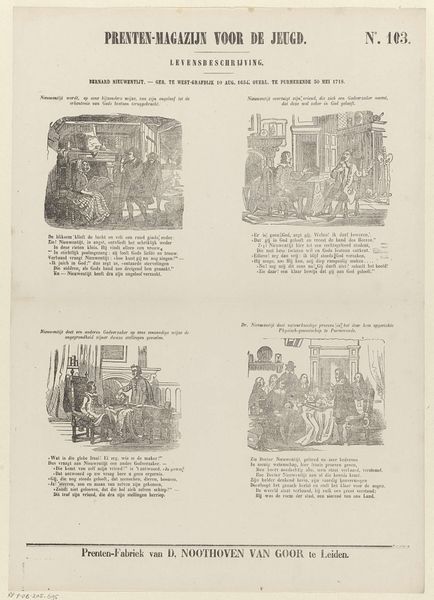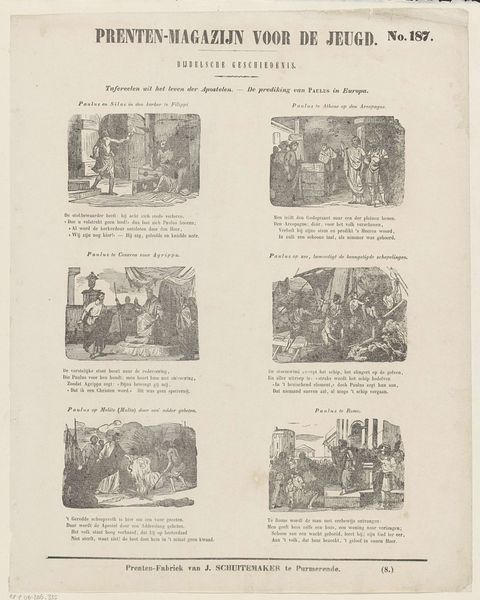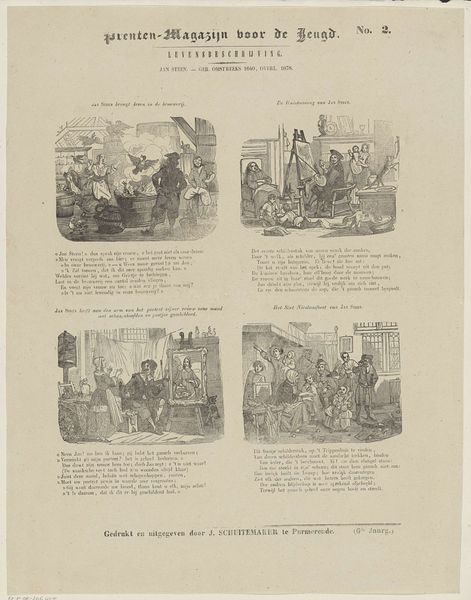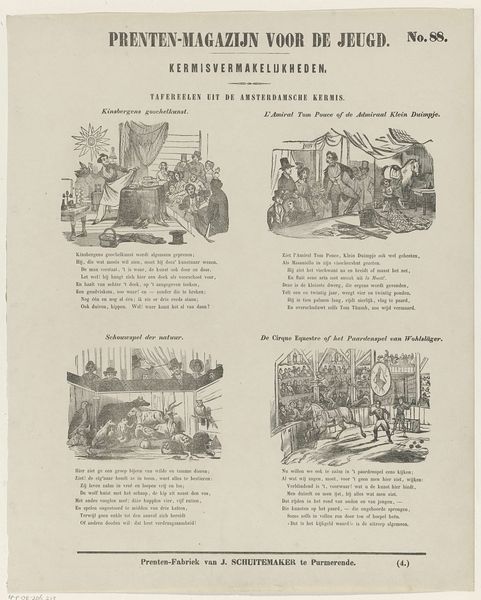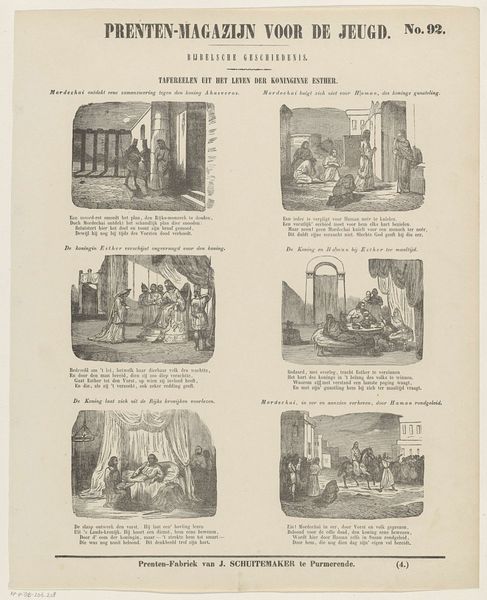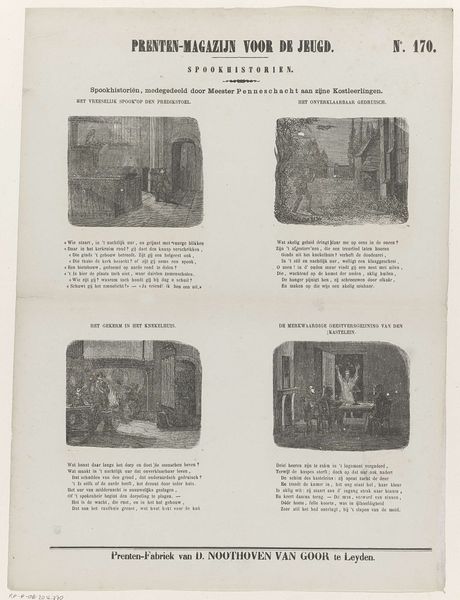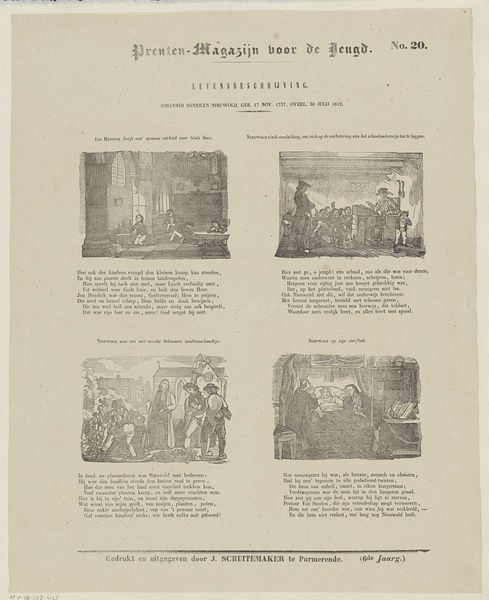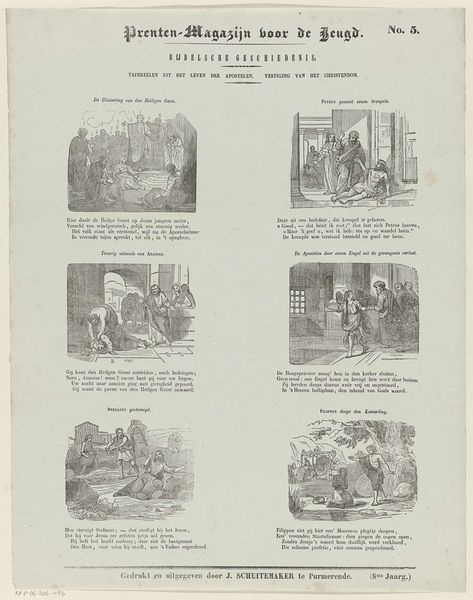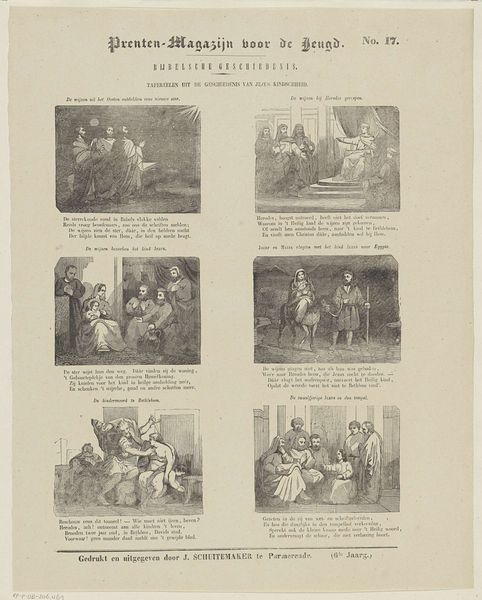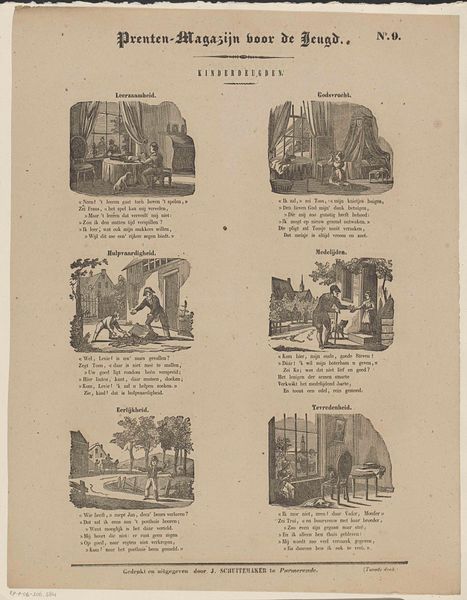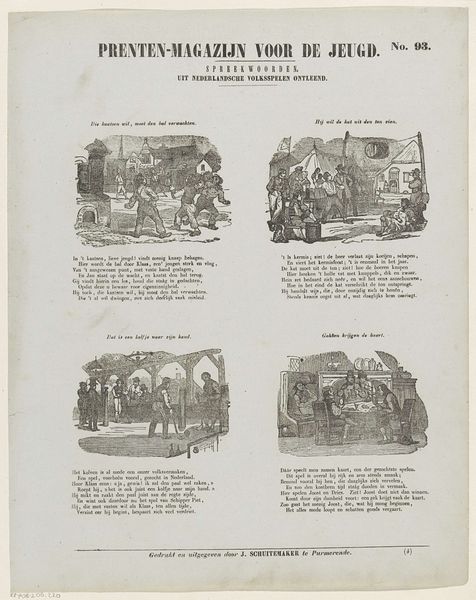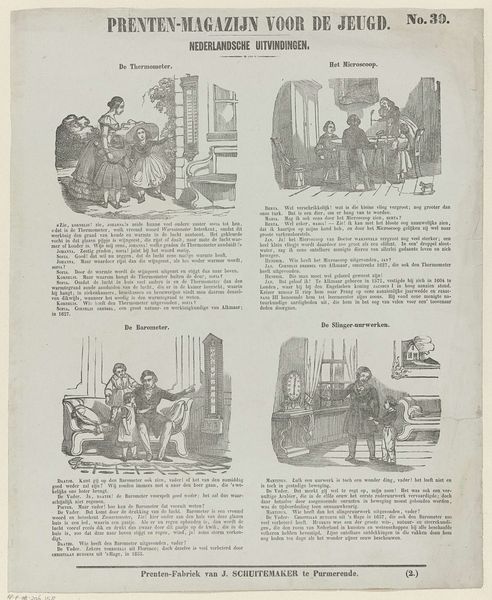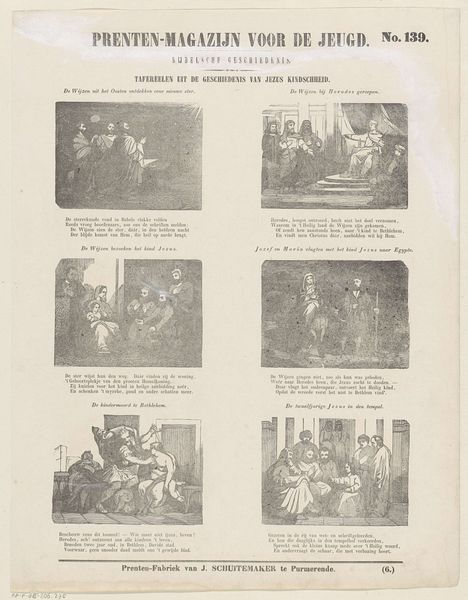
print, engraving
#
narrative-art
# print
#
genre-painting
#
engraving
Dimensions: height 434 mm, width 338 mm
Copyright: Rijks Museum: Open Domain
Curator: I'm immediately drawn to the intimacy in this engraving; there's a real tenderness to the lines. It almost feels like flipping through pages of someone’s diary. Editor: This is an engraving dating to 1847 titled “Pieter Nieuwland. – Geb. 5 Nov. 1764, Overl. 14 Nov. 1794” created by Jan Schuitemaker. Considering its origins, what kind of narratives do you imagine it wants to communicate? Curator: The way the scenes are blocked makes me feel I’m stumbling into little vignettes. A person being taught to read; what seems to be a mathematical lesson; what kind of stories of upbringing and growth were intended to speak to the ‘Youth’ referenced at the top of the engraving? Each box feels like a snapshot of a life unfolding, rendered in miniature. I wonder how viewers at the time reacted? Editor: Schuitemaker offers here a fragmented vision of a particular kind of scientific education. Nieuwland, the figure whose biography this work seems to relate, was an important figure within the Dutch scientific Enlightenment. The details presented by Schuitemaker tell us that education, especially scientific advancement, was clearly very much considered an accomplishment worthy of public acknowledgement, almost half a century after Nieuwland’s death. Curator: It's a very deliberate curation, right? There's a careful control to what details are shown. It's so different from how we consume images now, scrolling endlessly through feeds, versus this carefully constructed narrative delivered on a single page. Do you think this piece might speak to broader themes concerning children? Editor: Yes, because of the social and economic structures it valorizes through visual and textual description. Take the attention to literacy for instance, along with that boy demonstratively writing sums with chalk on the wall, for example. What’s so provocative here, I think, is that Schuitemaker doesn't just passively record the history of childhood. He frames its social narratives. Curator: Looking at these small scenes again makes me think that each box represents one verse of the poem written under it. They seem like little illustrations in their own right. Almost like this engraving becomes its own version of illuminated manuscript, bringing text and images together. I like that sense of layering and echoing. Editor: Yes, that layering and echoing between word and image makes this work still so powerful for considering historical themes and personal reflection, which perhaps, when combined, create possibilities for individual development and transformation. Curator: So true, in many ways Schuitemaker gives the audience the resources needed for their personal reinvention by providing this artistic framework of understanding.
Comments
No comments
Be the first to comment and join the conversation on the ultimate creative platform.

